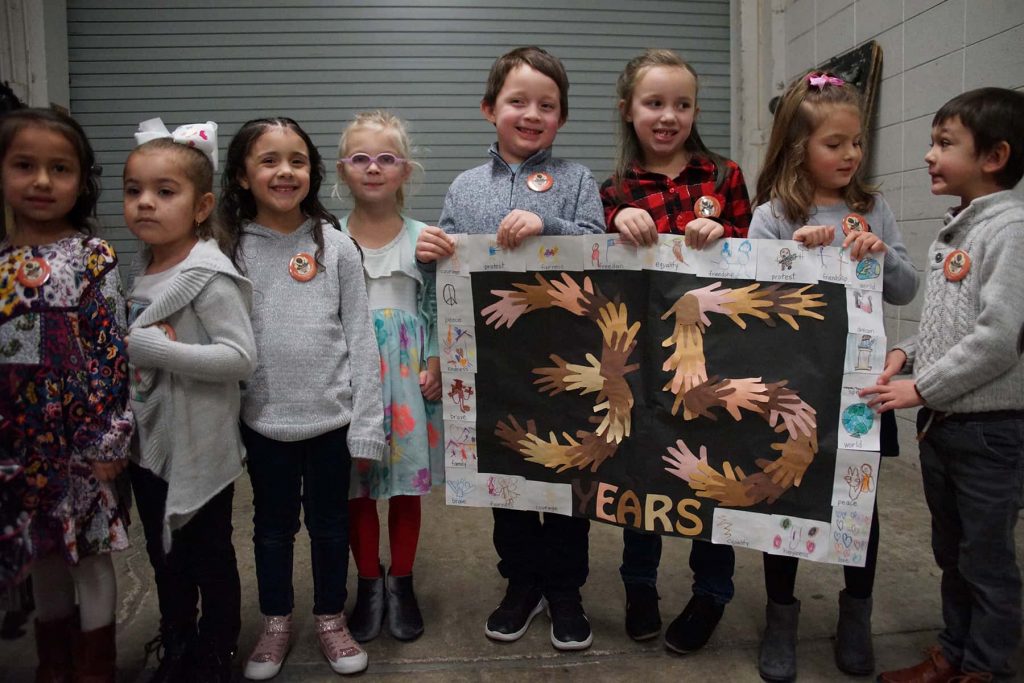
The nonprofit and for-profit sectors operate in tandem in the furtherance of the brutal concentration of wealth in the hands of the few, at the expense of the many.
On August 20, in the wake of Black Lives Matter protests around the country, Twitter CEO Jack Dorsey donated $10 million to Boston University’s Center for Antiractist Research. On its face, Dorsey’s donation looks like a demonstration of his commitment to social justice. But Dorsey’s company spent nearly fifteen years profiting off of hate speech. And the racist tweets that Twitter peddles have real world consequences; a 2019 NYU study found a connection between hateful tweets and real life hate crimes. It was only last month that Twitter finally took real action on hate speech—after Dorsey accumulated $8.3 billion in wealth from the platform. Dorsey’s antiracism donation is only one hundredth of a percent of the money that he made by monetizing hateful content.
Donations by the one percent to nonprofit causes have always held a place of reverence in American society. The nonprofit sector is seen as something like the angel on the shoulder of the American body politic, while the for-profit sector is the devil on the other shoulder. Though the business sector isn’t necessarily a force for good, American philanthropy is seen as a countervailing force that makes us feel like we live in a generous society.
The reality of the nonprofit sector is nowhere near angelic. The purpose of the nonprofit sector writ large is not to solve social problems—it is to perpetuate them. Nonprofits provide political cover for the rich to exploit people as much as possible while minimizing what they are required to invest back into social welfare. Jack Dorsey is allowed to make billions promoting hateful content, so long as he makes a high-profile donation every once in a while.
The nonprofit sector does prevent further harm. Without it, people would feel capitalism’s harsh realities much more acutely. More people would starve, more people would be homeless, and more people, frankly, would die. But nonprofits are a part of the system, not a solution. The nonprofit industry keeps the damage done by the rich to a socially acceptable minimum by providing scant relief to the very worst off among us.
Like Dorsey, wealthy people deflect attention from their mistreatment of workers by giving to charitable causes. When Elon Musk faced criticism for busting unions at Tesla production facilities, for example, he gave to the Sierra Club and asked the Sierra Club’s executive director to publicize his giving to deflect attention away from his harmful activities. (The Sierra Club complied.) When Jeff Bezos faced criticism, and potential legislative action, over Amazon headquarters kicking off Seattle’s housing crisis, he gave $97.5 million to nonprofits providing homeless services. Major donations change the conversation by providing good publicity. They also ensure that nothing fundamentally changes.
Homelessness is a perfect example of how nonprofits perpetuate, rather than fix, problems. As Erica West writes on SocialistWork.org, nonprofits frame the terms of what solutions are “appropriate.” The fact that homeless shelters exist perpetuates the idea that shelters are the appropriate solution to homelessness, rather than more radical organizing or changing the economic model of housing. Homeless shelters often fail to serve the people most in need, such as trans youth, because they rely on categorizing people based on gender to meet their target demographics, missing need on the ground. The very fact that homelessness still exists is a testament to the fact that nonprofits aren’t meant to solve problems; the Department of Housing and Urban Development estimates that it would cost $20 billion to end homelessness entirely. Jeff Bezos’s gift was almost 20% of that sum, but it would be ridiculous to say that homelessness is anywhere near “ended” today because of it.
Charitable giving isn’t even as “good” as it seems at face value. America’s philanthropic system is centered on the needs of the rich, not the needy, by design. The backbone of the American philanthropic system—the charitable tax deduction—was established alongside the federal income tax in 1917. It was meant to incentivize the wealthy to continue to fund public services, despite having to pay the new tax. Wealthy individuals like Andrew Carnegie and John Rockefeller had been funding research, museums, libraries, and programs for children. The government didn’t want them to stop because, if they did, the government itself would need to provide those services to its citizens.
The result was a system of charitable giving that robs the government of much-needed taxpayer money. For every tax-deductible dollar given to charity, taxpayers lose between 37 and 57 cents in tax revenue. Only the richest people in America can avoid taxes through the charitable deductions. In 2017, just over 10 percent of taxpayers were able to use the deduction. Today, the rich cheat the taxpayers out of necessary government funding for the services that the rich were intended to provide, all while looking generous. Instead of a strong social safety net, the people are left with a patchwork of privatized social services provided by nonprofits. Essentially, nonprofits exist because of a tax loophole that benefits only the rich.
The charitable tax deduction means that money that should be allocated through a democratic decision-making process is left to the whims of individual donors. More often than not, the rich choose not to give to social-service nonprofits at all. According to Slate, more than half of large donations by the very rich went to the already multibillion-dollar endowments of their alma maters. In 2015, the universities receiving the most money in “charitable” donations—Harvard, University of Pennsylvania, Stanford, John Hopkins, and Yale—already had endowments of more than $5 billion. After ultra-rich private universities, the top “charitable” causes of the wealthy are museums, cultural art centers, and high-end hospitals, all of which serve the rich, not the general public.
When money does filter down to fund privatized social services, it comes heavily burdened with restrictions. The resulting system is referred to as the nonprofit industrial complex, which is defined in the anthology The Revolution Will Not Be Funded: Beyond the Non-Profit Industrial Complex as “a set of symbiotic relationships that link political and financial technologies of state and owning-class control with surveillance over public political ideology, including and especially emergent progressive and leftist social movements.” Nonprofits are funded by grants from either the government, private foundations, individual donors, or a combination of the three. Government and foundations set the rules for how money will be distributed and used, preventing nonprofits from doing more radical work or from working on specific issues entirely.
Ultimately, funding dictates that nonprofit work must ultimately be capitalism-maintaining, not—reforming or—reimagining. Social justice-oriented advocates who want to create real change are prevented from doing so through the very structure of the nonprofit funding model. As a result, their energy is diverted from grassroots organizing and leftist movements and syphoned into organizations financially obligated to maintain the status quo.
The fact that nonprofits are dependent on private foundations is particularly troublesome. Private foundations are funded by private wealth, and private wealth in America is deeply rooted in slavery. The profits of slave labor formed the nest eggs of many American dynasties that continue to this day—the Byrds, the Carters, the Roosevelts, the Cabots, the Du Ponts, the Forbes. These “old money” families all made their fortunes in slavery, and, today, these families use that money to run the charitable foundations that then run the American nonprofit sector. The “new money” families in America—the Bezos, the Waltons, the Mars, the Kochs—made their fortunes through a less extreme form of worker exploitation than slavery, but worker exploitation nonetheless, through union-busting, long hours, unsafe working conditions, and low wages.
It is important to note that all of the richest people in America are white, and a disproportionate majority of them are male, meaning that billions of dollars of funding are entirely controlled by white people. A significant portion of this money was literally made off of the backs of enslaved people, and the rest of it was made largely through worker exploitation. Foundation funding then goes to the nonprofits themselves, where the overwhelming majority of nonprofit leaders are white. The highest funded nonprofits, with multimillion dollars of funding, are disproportionately run by white men. These realities are particularly disturbing when you consider that most social justice nonprofits exist in order to serve the needs of low-income communities of color.
Only 8-9 percent of grant-making from foundations actually goes back into communities of color. And women, people of color, and LGBTQ+ people are relegated to the lower levels of the nonprofit workforce, with no real power or decision-making authority. As a result, the dollars made from the exploitation of mostly black and brown people throughout centuries of American history are kept out of reach, swirling back and forth among the upper echelons of America’s white elite, all in the name of “philanthropy.” The nonprofit superstructure keeps money at the top, through trustee fees of hundreds of thousands of dollars and nonprofit pay scales commensurate with the corporate sector.
Meanwhile, the people nonprofits are meant to serve are exploited on promotional materials and funding pitches, with the most tragic stories told by upper-level executives in order to secure more money. As activist Ashlee Marie Preston points out, nonprofits essentially market and monetize the misfortunes of other people to the rich, who then absolve themselves of their guilt through large, one-time donations.
The internal politics of large nonprofits are often directly opposed to their public work. In 2019, the Southern Poverty Law Center, a nonprofit that works against hate groups in the U.S., ousted its founder over persistent racial and gender-based harassment of staff. Michael Johnson, the first Black CEO of United Way of Greater Cincinnati, an organization purportedly dedicated to empowering individuals, was forced to resign in 2018 after he was racially harassed by his board of directors. And, in 2018, during my internship at the ACLU, I witnessed discrimination against trans employees, at the same time that the organization was filing the court case that would enshrine the rights of LGBTQ+ people to not be discriminated against at work.
Just like the for-profit companies that generate money to fund them, many nonprofits rely on exploiting their workforce. Throughout the industry, workers are underpaid for working long hours. Lack of compensation for demanding work, with little institutional support and, too often, the stress of workplace discrimination, result in high turnover at nonprofit organizations. Nonprofit leaders refer to the “2.5 year” lifespan of an employee at a nonprofit. Compared to for-profit companies, nonprofits are also more likely to emotionally manipulate their employees, by calling their workplace a “family” or expecting employees to do additional unpaid labor to demonstrate their commitment to the cause.
Nonprofits are not spaces of liberation or even career building for employees. Since most nonprofit employees are women, and many are women of color, the nonprofit model relies on the feminization of the profession and racist stereotypes about the value of black women’s labor in order to continue to economically disadvantage already economically disadvantaged groups. It is well documented that women, people of color, LGBTQ+ individuals and other oppressed groups experience discrimination in nonprofit workplaces based on their identities. For example, Vox found that one nonprofit was paying its disabled workers in gift cards. Worker exploitation keeps frontline workers at the bottom, often only one paycheck away from being in need of the very services that they are providing.
All of this is not to say that all nonprofits are exploitative, or that nonprofit workers should be blamed for the sins of management. On the contrary, smaller nonprofits and grassroots organizations are often doing community-sustaining work. Rather than the rich, it is low-income communities that provide for their own needs. As The Atlantic reports, the poorest Americans give the most. While the wealthiest Americans donate only 1.3 percent of their income, the poorest donate 3.2 percent on average, and less affluent zip codes give more relative to their richer neighbors. While the rich give to museums and rich universities, the poor actually fund the social services that their communities need.
The nonprofit system is not the antidote to the excesses of American capitalism—it is an essential component of capitalism. The nonprofit sector is not the angel keeping the for-profit sector’s devil in check. Both sectors are better understood as the demonic twins of capitalism, profiting off of and perpetuating the pain of marginalized communities, all the while keeping any real solutions permanently out of reach.














